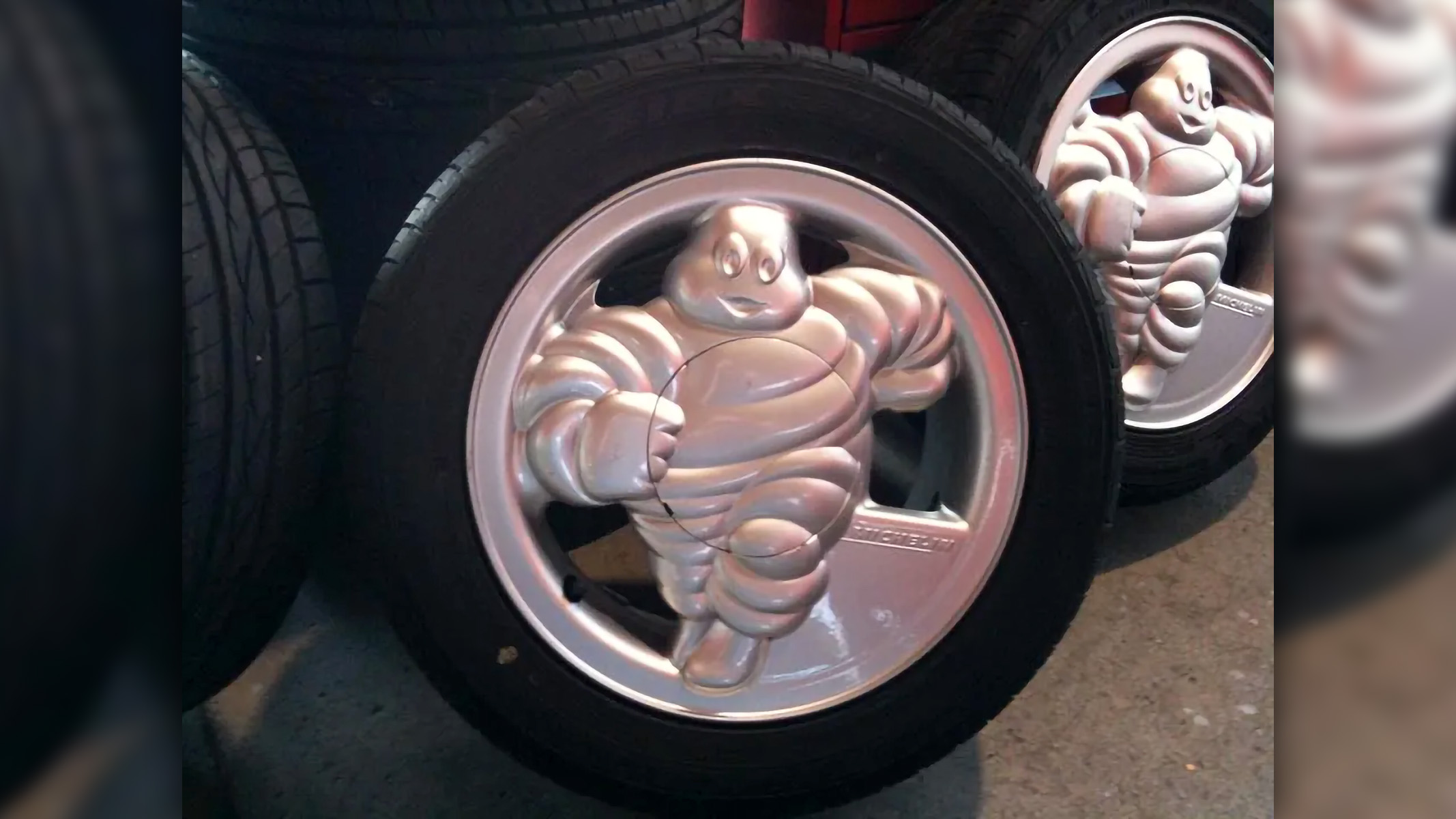

Ronal Teddies are the most famous of novelty wheels, but they’re simply the gatekeepers of the rare-wheel rabbit hole. Venture within, and you’ll discover the rarer Mazda Haribos, its even rarer Koalas, and the Hyundai Mickeys. But these may as well be commonplace compared to the ultra-rare Michelin Man wheels. They’re so rare that almost all of the information about them on the internet is hearsay and B.S.—but I’ve tracked down multiple owners to get the truth. Or at least, as much of it that still exists.
Modeled after Michelin’s mascot “Bibendum,” these wheels have been sporadically shared across the internet for at least 20 years now, though their origins and availability haven’t made the journey with them. They’re often purported to have been manufactured by Ronal like the cutesy bear wheels, supposedly in tiny numbers—as few as four sets worldwide. This is all complete nonsense of course, as I’ve found sources indicating a good deal more were made, and by who. The “why” is a missing piece, but I have what I’d argue is a safe guess.


For this history, I’ll be combining the accounts of two owners of these Bibendum wheels. One is a 2004 blog post by Japanese Michelin fan Biblog, while the other is a series of Facebook posts by user Cornelius Rapolani. A certification document shared by the latter debunks the Ronal origin rumor, specifying their manufacturer as Kronprinz AG, a prominent German manufacturer of steel wheels. In 1997, a majority share of Kronprinz was purchased by Michelin, which completely took over the company in 2004. It seems safe to assume these wheels were made to commemorate Kronprinz’s acquisition. Likewise, a translation of Biblog’s post suggests (if not definitively) that they were distributed alongside Michelin tires in some regions.
The wheels were apparently cast from aluminum alloy in a single size, 14×6, with a 4×108 bolt pattern and a 16-millimeter offset. That size mostly fits a range of small French cars, such as the Peugeot 205 or Citroën Saxo and Xantia. Weight-wise, they’re as pudgy as Bibendum himself for 14-inch alloys, coming in between 15 and 20 pounds—our friend Biblog wasn’t able to be more specific. They also shoot down the notion that only a few sets exist worldwide, stating that 20 sets were imported to Japan alone. They came to own one of those sets of wheels, which they describe as “horrible.”




Apparently, Michelin’s Bibendum wheels were cheaply designed and made, which you might expect from a novelty aluminum wheel made by a company specializing in steelies. Their shape means they don’t cool brakes well, while Biblog’s author reports two details that suggest they weren’t high-quality wheels. They’d heard other owners report their (irreplaceable) center caps popping out at highway speeds, while personally seeing tire technicians struggle to balance the oddly shaped wheels. Not that they didn’t amuse the hell out of the techs working with them, though.
“I always have them balanced at a regular car parts store when I change the tires,” wrote Biblog in November 2004. “They seem to put a lot of effort into balancing (the position of the balance weight is different every time). The guys who work on them are shocked at the wheels for a moment, but I enjoy watching them change them from the rest area where you can see the pit of the store, grinning and talking to their friends about how they have things like this!”

Beyond this however, the trail of info runs totally dry. We don’t actually know how many sets were made, what they originally cost, or exactly how they were distributed. They’re also sold so infrequently that we don’t even know what you could say they’re worth. One undated listing on Japanese site Mercari shows what appears to be a single wheel selling for $505, if not for a set of four. For what it’s worth, Rapolani told us he bought his set for the equivalent of less than $500—they’d probably cost more to acquire now that they’re more widely known.
Personally, I don’t see the point of tracking down a full set if they’re expensive, bad to drive on, and don’t fit many cars. There aren’t many things automotive that are truly better to look at than drive, but these cryptids of wheels are probably among them.
Got a tip or question for the author? You can reach them here: james@thedrive.com